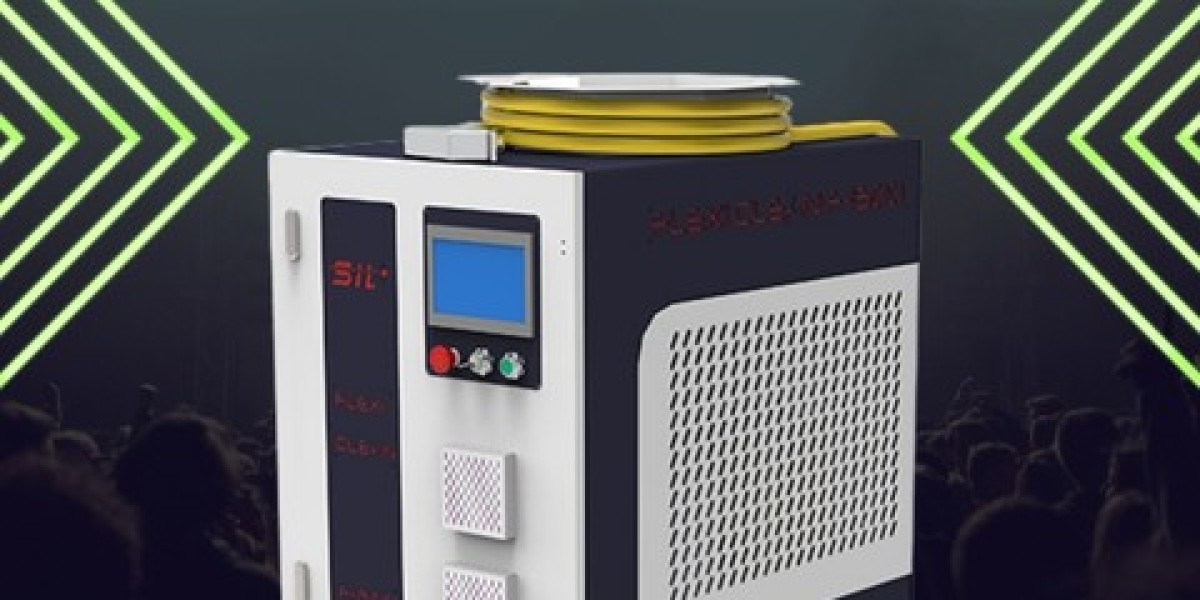A fiber laser cleaning machine has emerged as a reliable choice for addressing these challenges. Unlike traditional cleaning techniques that rely on harsh chemicals or abrasive blasting, fiber laser technology brings a new dimension to industrial cleaning processes with consistency, precision, and durability.
Industrial sectors such as automotive, aerospace, shipbuilding, electronics, and even heritage restoration are increasingly incorporating fiber laser cleaning machines into their processes. This is not a passing trend but rather a shift towards a more sustainable, efficient, and adaptable cleaning solution that supports both heavy-duty industrial applications and delicate material restoration.
Why Surface Cleaning Matters in Modern Industry
Every industrial product goes through various stages of manufacturing, assembly, and finishing. Metal components, for example, are prone to developing oxide layers, rust, and contaminants over time. If these are not removed properly, they can affect welding quality, reduce coating adhesion, or weaken the lifespan of the product.
Traditional methods like sandblasting, chemical baths, and manual grinding have been used for decades, but they come with limitations. Chemicals raise environmental concerns, abrasive blasting often damages the base material, and manual cleaning lacks consistency. Here is where the fiber laser cleaning machine changes the dynamics by offering controlled, precise, and repeatable results without direct contact with the material.
How a Fiber Laser Cleaning Machine Works
The working principle of a fiber laser cleaning machine is based on the interaction of a high-intensity laser beam with contaminants on a surface. The laser beam is absorbed by rust, paint, or other unwanted layers, causing them to evaporate or detach instantly, while leaving the underlying base material intact. This non-contact process allows even fragile surfaces to be cleaned effectively without mechanical stress.
Fiber laser cleaning machines are powered by fiber laser sources, known for their energy efficiency, long lifespan, and ability to operate continuously with stable output. The cleaning head is often handheld or mounted on a robotic arm, depending on the scale of application. Operators can adjust parameters such as laser power, frequency, and beam size to match the specific type of surface or contaminant being treated.
This adaptability makes the fiber laser cleaning machine suitable for diverse industries where precision and cleanliness directly influence productivity and product quality.
Industrial Applications of Fiber Laser Cleaning Machines
The versatility of fiber laser cleaning machines makes them suitable across a wide range of industries:
Automotive Industry – Used for removing rust, grease, and paint from car parts before welding or coating.
Shipbuilding and Marine Applications – Helps in cleaning large metal surfaces affected by corrosion and salt deposits.
Aerospace Industry – Ensures safe removal of coatings and oxides without damaging sensitive materials.
Electronics Manufacturing – Used for precise cleaning of small components without introducing contamination.
Cultural Heritage and Restoration – Helps in removing unwanted deposits from stone or metal artifacts while preserving the original structure.
Oil & Gas Sector – Useful in cleaning pipelines and drilling equipment exposed to harsh environments.
The fiber laser cleaning machine is not limited to one type of application. Its adaptability across various sectors makes it an essential tool for industries that value efficiency and precision.
Performance and Efficiency
The performance of a fiber laser cleaning machine depends on several factors such as laser power, beam quality, and scanning speed. Modern machines are designed to handle both light cleaning, like removing oil or thin paint layers, and heavy-duty cleaning, such as stripping thick rust or coatings.
Another key aspect of performance is operational efficiency. Since there are no consumables like chemicals or blasting media, industries save on recurring costs. Downtime is reduced as cleaning is faster, precise, and requires less preparation. The machine can be integrated into production lines, ensuring seamless operations without halting workflow.
Safety and Maintenance
Operating a fiber laser cleaning machine involves following proper safety measures. Since the laser beam is powerful, protective eyewear and designated operating zones are essential. Most modern machines come equipped with user-friendly interfaces and safety interlocks to minimize risks.
From a maintenance perspective, fiber laser cleaning machines are known for their durability. With fiber laser sources lasting tens of thousands of hours, the overall upkeep is minimal. Regular inspection of optical components and cooling systems ensures consistent performance.
This reliability makes the fiber laser cleaning machine a long-term investment for businesses seeking robust solutions in surface cleaning.
Economic Perspective
From a business standpoint, adopting a fiber laser cleaning machine is not just about cleaning—it is about optimizing operations. Companies no longer need to rely on chemicals, abrasive materials, or labor-intensive cleaning techniques. This shift reduces recurring costs, lowers environmental compliance expenses, and increases productivity.
Moreover, as industries move towards automation and sustainable manufacturing, fiber laser cleaning aligns perfectly with these goals. It is a future-ready solution that can support high-volume production demands while maintaining quality standards.
Environmental Considerations
Sustainability is a growing concern in modern industry. The use of harsh chemicals for cleaning not only creates hazardous waste but also poses risks to workers and the surrounding environment. By contrast, a fiber laser cleaning machine uses pure light energy, leaving no secondary waste. Dust or small debris generated can be easily collected with extraction systems.
This eco-friendly approach positions fiber laser cleaning as a responsible technology that supports environmental policies and corporate sustainability initiatives. Companies adopting this technology can also strengthen their reputation for prioritizing safe and green practices.
The Future of Fiber Laser Cleaning
As industries evolve, the role of fiber laser cleaning machines will only expand. With advancements in laser technology, machines are becoming more compact, energy-efficient, and powerful. Integration with robotics and artificial intelligence is also paving the way for fully automated cleaning systems that require minimal human intervention.
Industries seeking to stay competitive in global markets are recognizing the importance of upgrading to technologies that deliver long-term value. The fiber laser cleaning machine is not just an industrial tool; it represents a forward-thinking approach to manufacturing and maintenance.
Final Thoughts
The industrial landscape is changing rapidly, and with it, the demand for efficient and reliable cleaning solutions is growing. The fiber laser cleaning machine has become an essential part of this transition by offering precision, adaptability, and sustainability. From removing rust and paint to preparing surfaces for welding and coating, it ensures quality and performance across various sectors.
Businesses that invest in fiber laser cleaning machines are not simply adopting a tool; they are embracing a solution that aligns with modern industrial demands and future growth. As technology continues to advance, the role of fiber laser cleaning in shaping efficient and eco-friendly industries will only become stronger.








